Report on 29th Meeting: 9th March, 2019
Not the lowest turnout we’ve had, but enough people managed along to make it an engaging event, with some good playing and chat, culminating in a presentation to Bill Samson – more on that later.
Bill Samson and Rob Mackillop kicked off proceedings with a rarely heard ensemble of two baroque lutes, with an Allemande and Courante by Logy. The Allemande hit the spot, allowing the melodic interplay to be heard to its fullest. However, the Courante was by their own admission a little scrappy – not bad, just not what it could have been. Considering the lads live in different towns, this coming together for some baroque pluckers was not bad at all.
Rob MacKillop the introduced the new love of his life: an all-original c.1880 Spanish guitar, complete with original tornavoz, a brass cone insert, purported to strengthen the bass register, giving a very sweet sound indeed. Rob related the surprising story of how he acquired the instrument: someone just knocked on his door, thinking he might be interested in it!
Rob furnished it with Aquila gut and silk strings, but three of the bass strings broke within ten days. The tension between nut and tuning machine hole causes the string to stretch. Modern synthetic silk can accommodate that pull, but real silk cannot. But a solution is to be found in the first volume of Emilio Pujol’s four-volume Guitar School, based on the principles of Tárrega. See diagram and Rob’s wife’s handiwork.
Problem solved!
Rob played three Catalan arrangements by Miguel Llobet, and the audience marvelled at how sweet the instrument sounded. It is Rob’s intention to record a download album of suitably-associated music for the guitar. Although the label mentions one Antonio Carlos Garcia, it is not thought that such a luthier existed, and that the instrument was constructed in a Valencian workshop, for sale in Madrid.
More about the guitar can be found on Rob’s website: https://rmclassicalguitar.com/antonio-carlos-garcia/
Stuart McLuckie played three of the 70 Easy Pieces for Renaissance Lute (a Lute Society publication), numbers 15 (God Protect You, Sire) 13 (Corrente) and 9 (Balleto). As ever, Stuart played stylishly, with the rhythm of the courante clearly articulated. All three pieces were well received.
Chris Jupp borrowed Stuart’s lute for two pieces from Robert Dowland’s Variety of Lute Lessons: a Holborne Pavan, and Queen Elizabeth Galliard. Chris’s performance initially suffered from not being totally familiar with Stuart’s lute, but he warmed up afore lang in the Pavane, and turned in a nice performance. The galliard was particularly jaunty.
Chris Elmes treated us to a performance on a Bill Samson lute, once of six courses, now “medievalised” into a 5c, plucked with quill made from an old string. The strident sound of the quill-struck lute contrasted strongly with the preceding mellow-toned quiet lutes and guitars, as Chris improvised a prelude before launching into a semi-improvised rendition of Lucente Stella, a balleta from the Rossi manuscript of circa 1340. It’s always a treat to hear Chris play, and the lute sounded magnificent.
Finally, Bill Samson gave us his reminiscences – postponed from the last meeting. He made his first lute in 1960 – a very poor effort, by his own estimation – but made a much better one in time for the first Lute Society Summer School in 1967. He showed us a number photographs from a variety of summer schools over the years, with an increasing number of participants (echoing the rise in popularity of the instrument), and also the variety of hair lengths and bell-bottomed breeks of the participants!
Bill received tuition from Diana Poulton, but the big change in technique – the discovery of thumb-inside playing – was dropped like a bombshell by Michael Schäffer. The lute world was split asunder, and arguments raged, almost registering on the Richter magnitude scale. Unfortunately, proponents of the “new” technique used it for everything from Renaissance to Baroque-period music. As Philomena Cunk might say, we are all so much clevererer now!
As Bill’s talk drew to a close, Rob MacKillop rose to present a gift to Bill: a signed, cloth-bound edition of The Vihuela de Mano and the Spanish Guitar: A Dictionary of the Makers of Plucked and Bowed Musical Instruments of Spain, 1200-2002, by José Romanillos Vega and Marian Harris Winspear. This was to mark Bill’s 75th birthday, and his contributions to the lute in and furth of Scotland. He has always shown a willingness to help would-be lute makers or players, and was the first luthier in modern times to make a Dutch double-headed 12c lute, and an English theorbo. Such pioneering work should not be overlooked when the history of the 20th-century lute is written. Thanks for all your contributions, Bill – unlike some, you are always far too self effacing to promote your own considerable achievements. The cost of the book was met with contributions from the membership.
Colour photos by Bill Samson, B&W by Rob MacKillop.
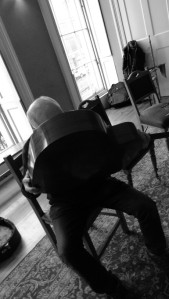
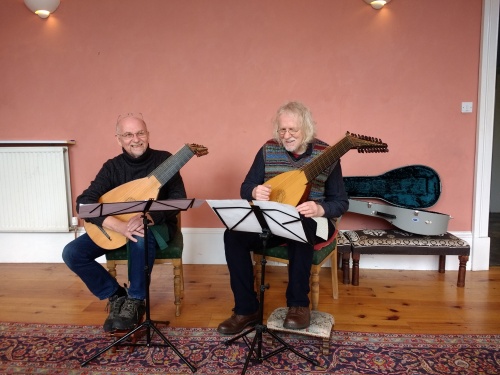
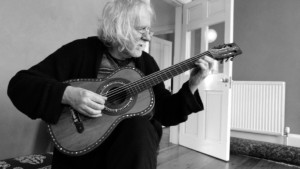


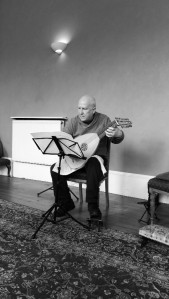

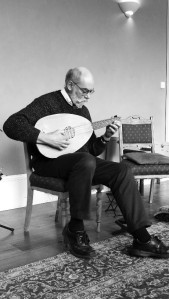
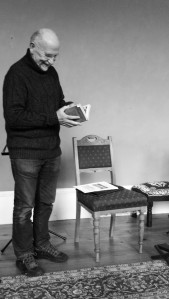
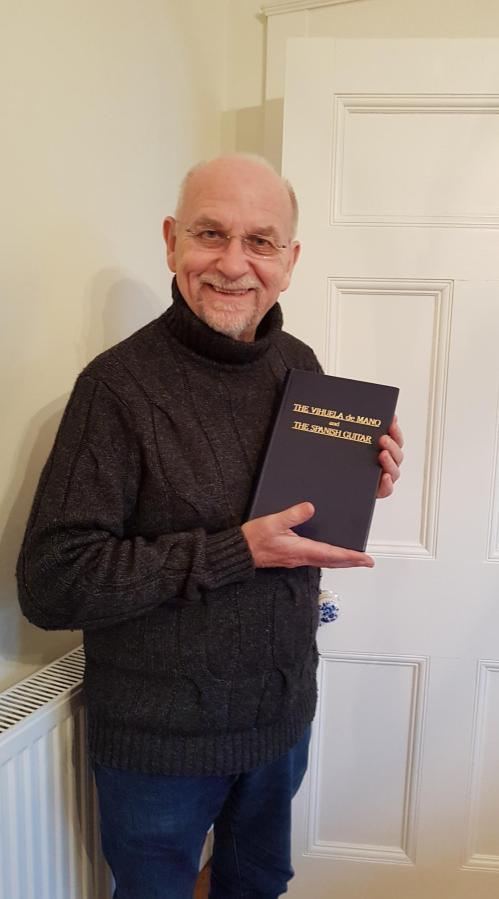
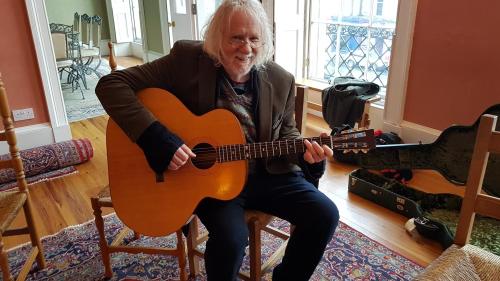
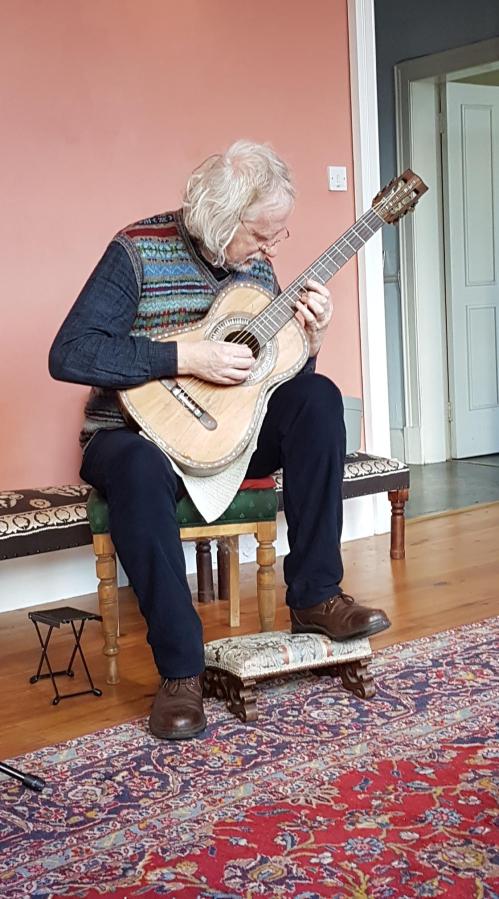


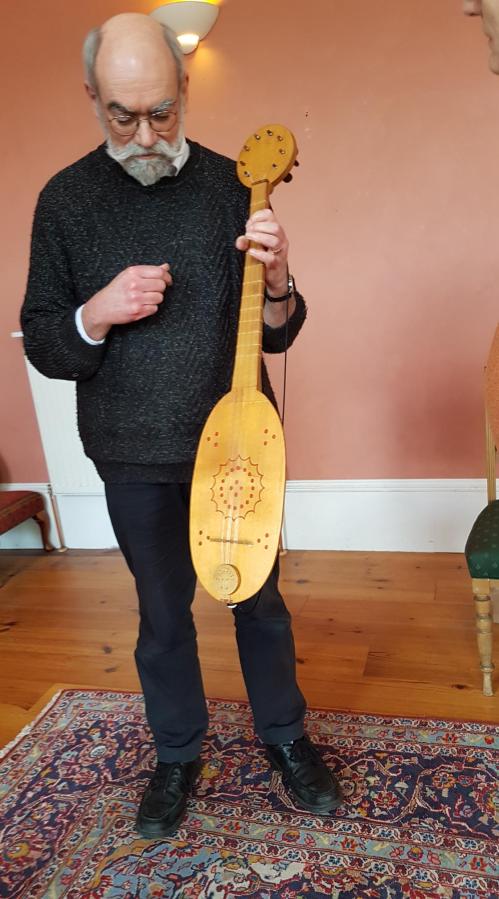


Leave a Reply